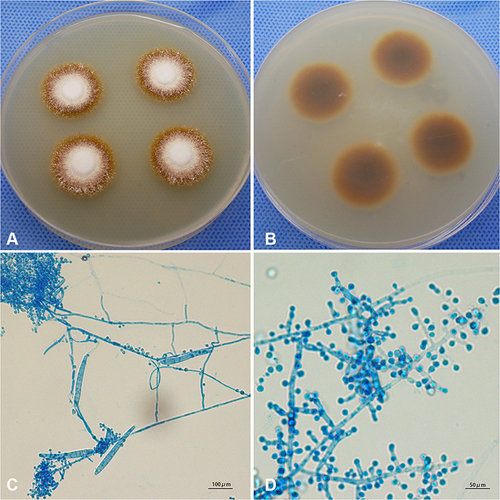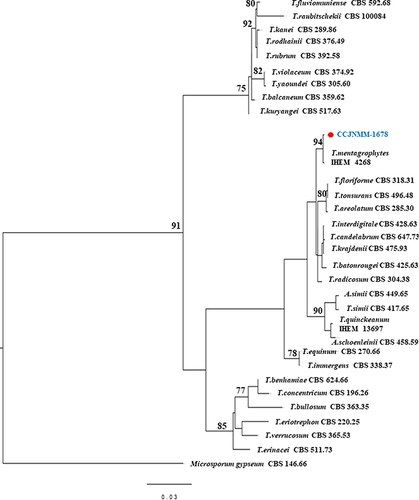Figures & data
Table 1 Cases of Impetigo-Like Tinea Faciei
Figure 1 Images of the lesions before treatment (A–C). Image of the lesions on her right cheek (A). Image of the lesions on her chin (B). Image of the lesions on her left cheek (C).

Figure 2 The strain was cultured on SDA at 28 °C for 1 week. The images of colony showing white colonies peripherally radiating, centrally raised, and powdery margins (A), and the reverse side showed yellow to brown colonies (B). The strain staining with lactophenol cotton blue was observed under light microscope showing filamentous and spiral hyphae, microconidia and macroconidia (original magnification × 200) (C), and a grape-like arrangement of microconidia laterally and terminally inserting at the hyphae (original magnification × 400) (D).

Figure 3 Maximum likelihood phylogenetic tree created from ITS and β-Tubulin sequences of 31 Trichophyton species including CCJNMM-1678 and 30 representative type strains sequences with bootstrap above 70% are shown. The phylogenetic tree was rooted with Microsporum gypseum (actually Nannizzia gypsea) CBS 146.66.


